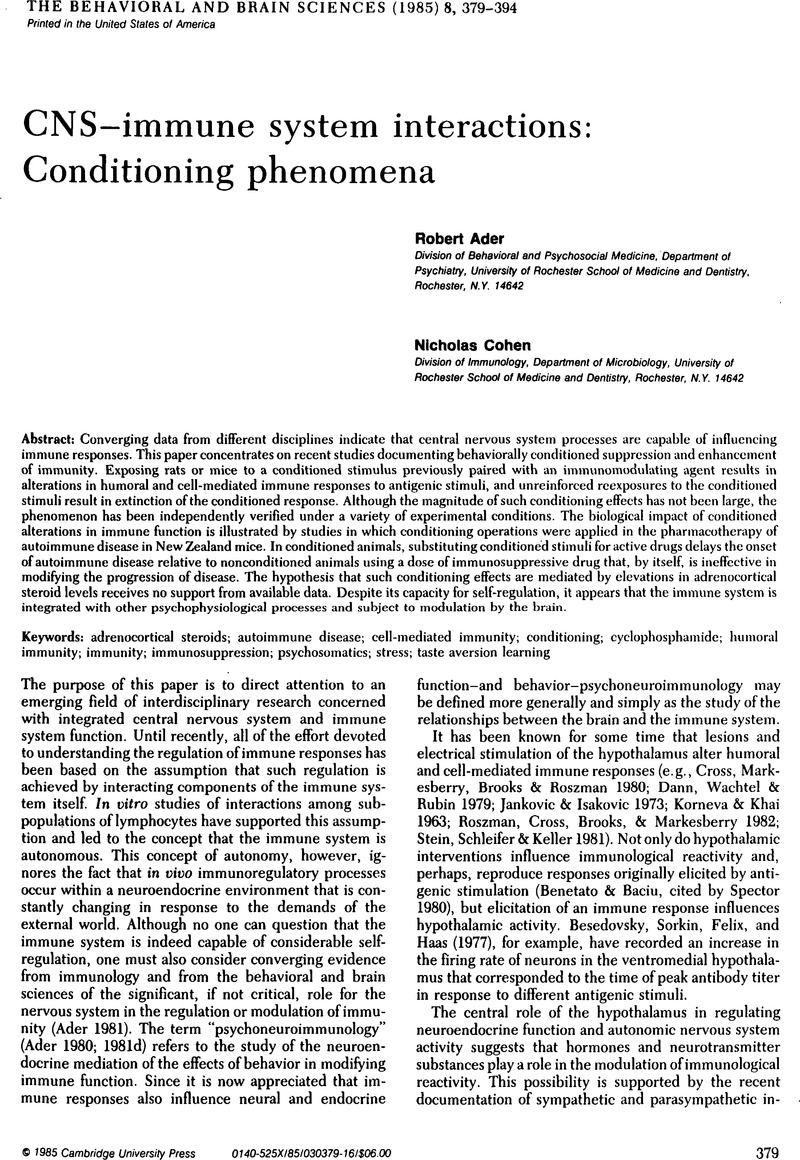Crossref Citations
This article has been cited by the following publications. This list is generated based on data provided by Crossref.
Krank, Marvin D.
and
MacQueen, Glenda M.
1988.
Conditioned compensatory responses elicited by environmental signals for cyclophosphamide-induced suppression of antibody production in mice.
Psychobiology,
Vol. 16,
Issue. 3,
p.
229.
Siegel, Shepard
1989.
Psychoactive Drugs.
p.
115.
MacQueen, Glenda M.
Siegel, Shepard
and
Landry, Joanne O.
1990.
Acquisition and extinction of conditional immunoenhancement following training with cyclophosphamide.
Psychobiology,
Vol. 18,
Issue. 3,
p.
287.



